Wallpaper for a small kitchen: the subtleties of choice
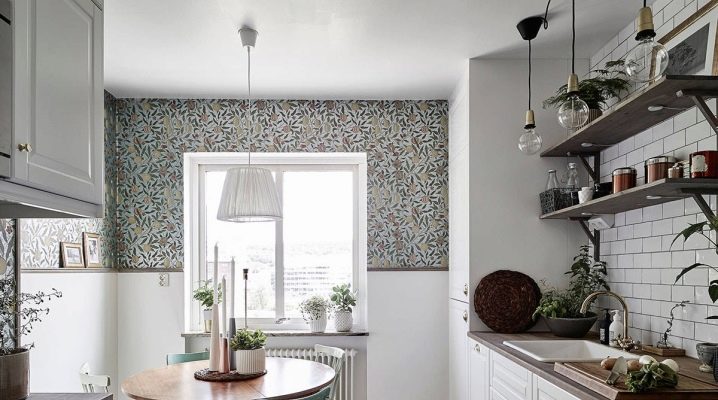
There are still many small-sized housing in our country, where the kitchen is a small island in which both furniture and equipment must be placed, and it would be nice to fit ourselves. And if it is not possible to increase the footage of the room, then it is worth at least visually increasing the space of the kitchen. This can be done through the competent selection of furniture, appliances, curtains and blinds, as well as wallpaper.
Before the purchase
A small kitchen that serves as a place for cooking and storing food, as well as a general gathering of family members, should always be clean and comfortable. Therefore, wallpaper for a small kitchen should be selected in such a way that:
- they did not fade for a long time;
- accidental grease and dirt were easily removed from them;
- did not cause a depressive state;
- visually enlarged the space;
- were unmarked;
- were resistant to abrasion;
- had high moisture resistance and vapor permeability;
- did not absorb odors;
- combined with the overall design idea.

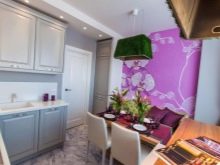
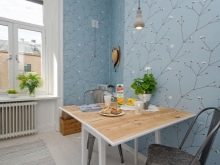
Which ones to choose?
Wallpapers are distinguished according to several criteria:
- density (light, medium, heavy);
- number of layers (single or multi-layer);
- moisture resistance (high or low level, washable);
- texture (smooth or embossed);
- type of pattern (plain, with a plot pattern or ornament).
Bamboo, velvet, silk fabrics are definitely not suitable for a small kitchen, since they absorb all odors and moisture very well, and it is not easy to take care of them in the kitchen. In addition, they fade quickly.
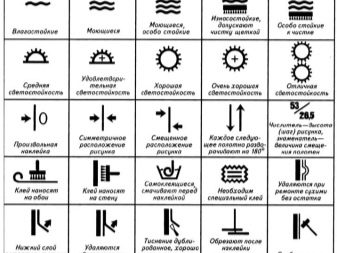
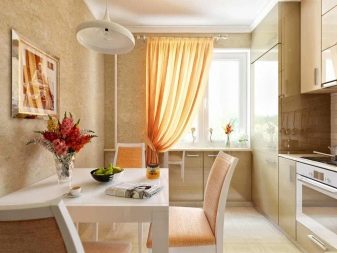
Types and characteristics
It would seem, what can you think of to decorate a small kitchen area? It turns out that you just need to do a good job of all types of wallpaper. It is also important to be able to read the instructions and symbols that accompany each roll.
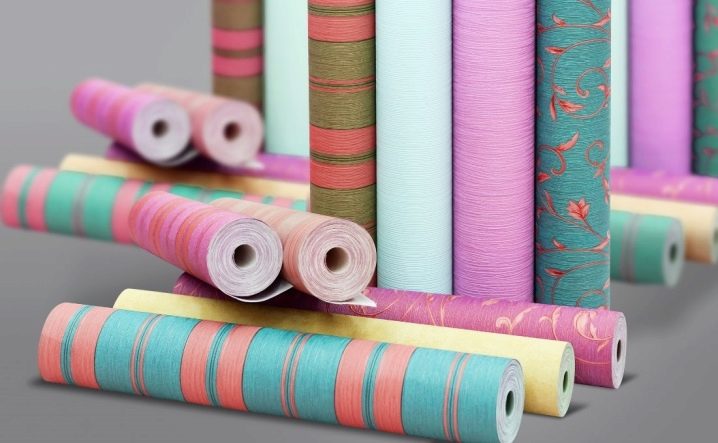
Acrylic
They are compared to vinyl because of the similarity of their structures. But for acrylic canvases, the top layer is twice as thin. This deteriorates moisture and wear resistance. Not everyone recommends using this wallpaper in the kitchen. But they breathe, weigh half as much as vinyl, are cheap, so they are suitable for budget repairs or as a temporary option in anticipation of major renovations.
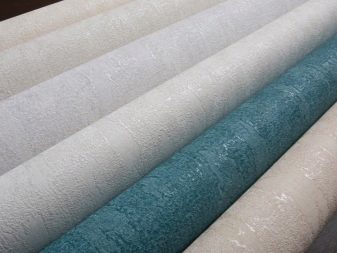

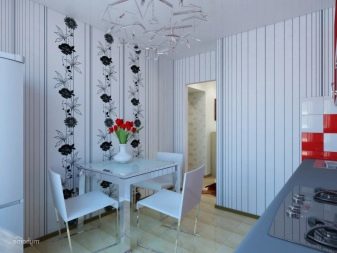
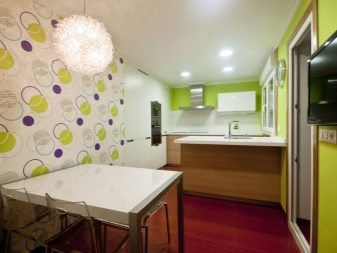
Paper
The most common and inexpensive type. For the place of preparation, it is important that they are breathable, but single-layer ones are easily torn at the time of gluing. Therefore, now they are producing two-layer dense wallpaper - duplex. And you can safely forget about Soviet uninteresting canvases, because you can pick up paper wallpapers for any design.
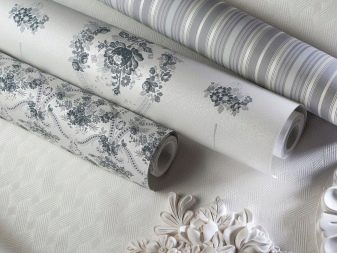

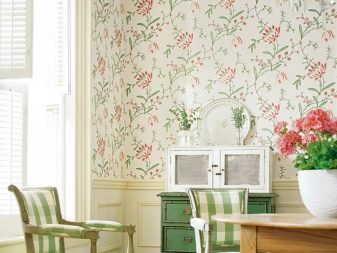
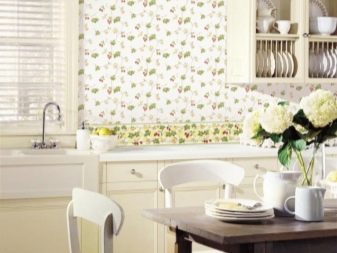
Vinyl
Polyvinyl chloride is perhaps the most popular modern wall material. It is based on paper or non-woven material, which are covered with a vinyl film. Depending on how the coating is carried out, vinyl wallpaper is divided into:
- Smooth high density. Often, stone or brickwork, ceramic tiles are depicted as a pattern. Cloths can be washed without wetting the sponge very much. The wall must be leveled before gluing.
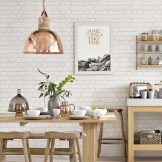
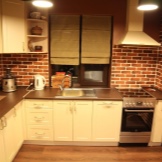
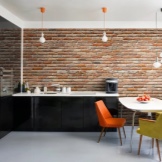
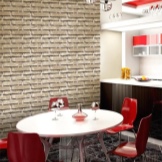
- Foamed. Only this vinyl breathes, which is important for the kitchen. You can't wash it with water, if only with a slightly damp cloth. It hides wall defects well.

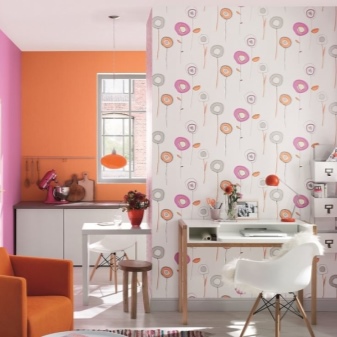
- Solid. Very good volumetric imitation for stone, brick, plaster, textiles by using a rigid film. High strength, moisture resistant. There are options for self-painting.
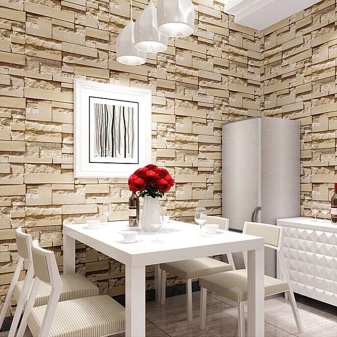
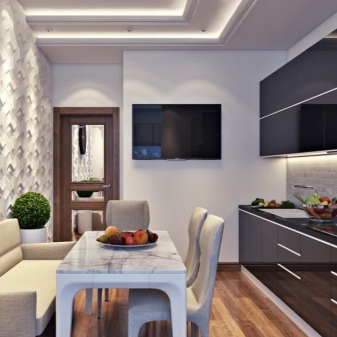
- Silkscreen not suitable for a small kitchen.
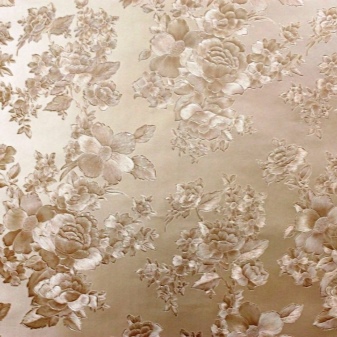
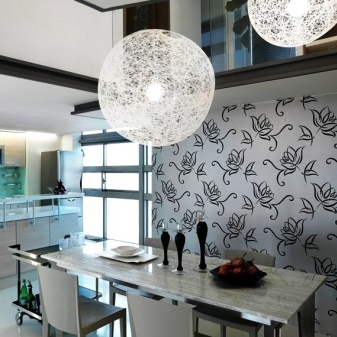
Vinyl canvases retain their appearance for a long time, but they need to be carefully glued: when they dry on the walls, they shrink, forming gaps between the stripes.
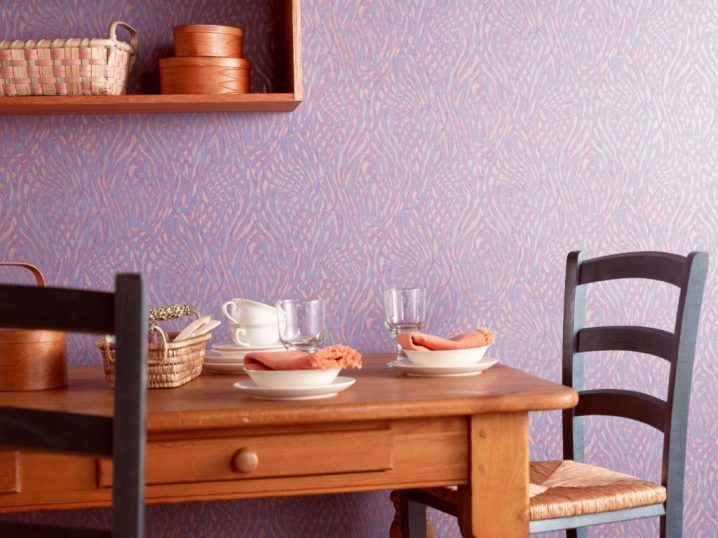
Liquid
A great way to "dress" a small room, especially if the walls have a lot of corners and irregularities, as well as arches. You can buy a ready-made mixture or make it yourself. This process is painstaking. But if dirt or grease gets on the wall, the wallpaper can be replaced exactly in this place (regardless of the size of the damage). Since reflective elements can be added to such compositions (glittering dust, finely cut "rain"), the room will seem larger both in sunlight and when the lamps are on.
After complete drying, the walls can be varnished. Then the wallpaper will not absorb moisture and odors and can be washed. But still, it is not recommended to paste over the surface of the stove and sink with such a composition.


Quartz
Modern type based on paper or non-woven fabric covered with colored quartz sand. Very resistant to abrasion, not afraid of fire. Joints are invisible on them, they can be painted and applied with drawings. But they are rough to the touch, it will not be easy to wash the stain from such a wall.

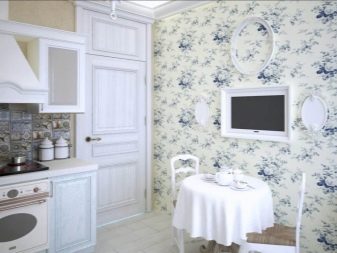
Metallized
Silver-plated, bronze or gold-plated aluminum foil is applied to a porous paper or fabric backing. An incredibly beautiful shine will make the room with a mirror effect, which will visually enlarge the kitchen. The wallpaper can be perfectly cleaned, but you can only glue it on a flat moisture-absorbing wall (for example, a wooden one). The wallpaper will dry through this surface. In addition, the wall must be perfectly flat.
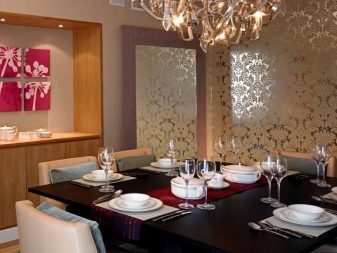
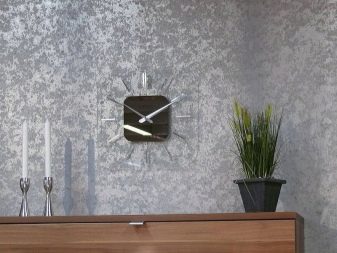
Washable
Water resistance is the main criterion for these rolls. But exactly how you can handle them, you must definitely read on the packaging before buying: some canvases can only be gently wiped with a slightly damp sponge, while others can be cleaned with a stiff brush.


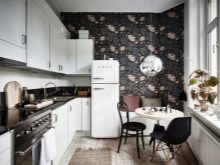
Glass fiber
A strange name for eco-friendly wall paintings, but it is. The bottom line is that the wallpaper is really made of fiberglass, after which it is glued to the walls and ceilings. Initially white, but textured, they acquire color and patterns after gluing. Moreover, you can paint the surface several times. The material is extremely durable, will withstand accidental blows, animal claws, and also hide flaws in the walls. Wallpaper is moisture and breathable, which is important for the kitchen.
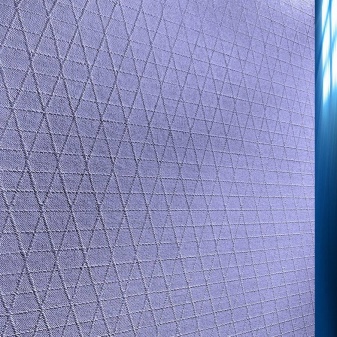
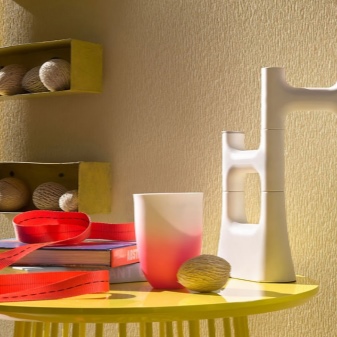
Non-woven
The combination of textile and cellulose fibers with a polymer similar to glass fiber gives a nonwoven fabric for wallpaper called interlining. Non-woven fabrics are loved by customers because they do not shrink when dry. Strength, durability, varied use in the interior, visual appeal make these wallpapers better than others. In addition, when gluing, it is not the pieces themselves that need to be processed with glue, but the wall surface, which allows gluing without gaps. They perfectly hide the defects of the walls, and they can be glued, perhaps, on a wall made of any material. But at the same time, the canvas is translucent, which must be taken into account when gluing it to the old wall.
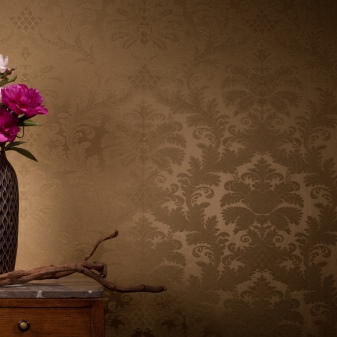
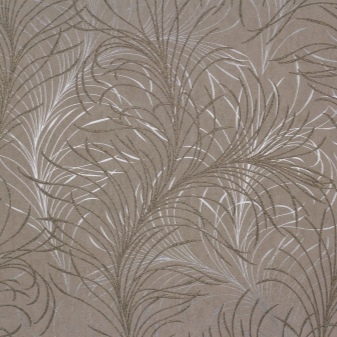
Wallpaper
Unusually popular in the 80s and 90s of the XX century, in the early 2000s they began to seem like a kind of demonstration of cheapness. But now the situation has changed again. Modern technologies allow using this type of wallpaper to turn a very small kitchenette into a real dining room or living room. And the point is not only in the subject of the photograph, but also in the technique of its execution. For example, such a popular 3D effect is now an excellent solution for creative design.

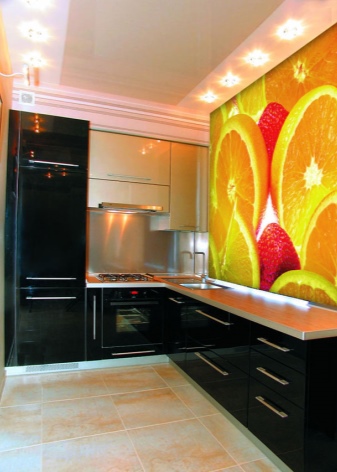
But it is important to remember that it is very important to use the plot correctly:
- do not use a large drawing;
- there should not be too many bright colors, they will reduce the space and will psychologically crush;
- flowers and patterns that are too small can be illuminated with LED strips or spotlights, or such patterns should be used in light kitchens.
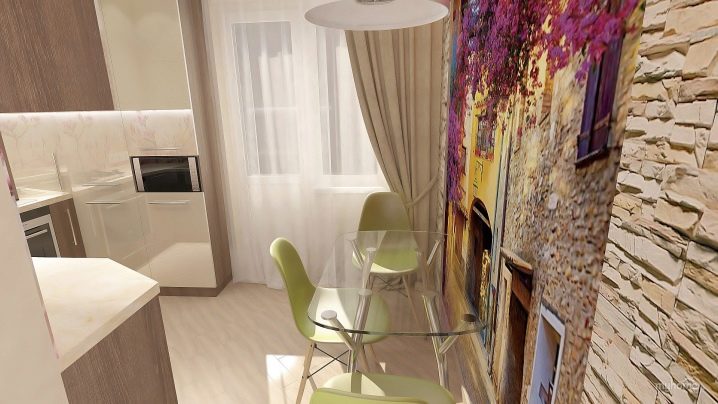
You can also get acquainted with other types of wallpaper, such as linkrust, laminated. It is possible that they are suitable for your kitchen.
How to choose the right colors?
It would seem that a lot has been written about the rules for selecting colors. But each room has its own aspects:
- which side is the kitchen: sunny or shady;
- what shape it has at the base: a square, a rectangle, broken geometry;
- overcrowding with furniture;
- number of family members;
- the presence of small children and animals.
To achieve maximum comfort under the listed conditions, you will need to choose the right colors. One of the main rules of an artist, designer, home craftsman is not to use more than three colors in the design, so as not to be considered a tasteless hostess. Given the fact that many people love wallpapers with numerous elements, you will have to try to make the right choice.
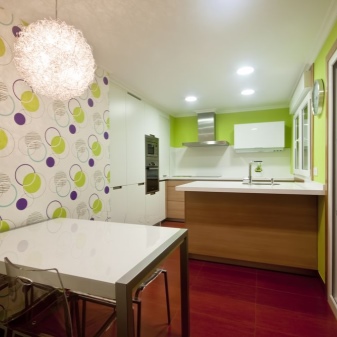

Another rule: let the walls be lighter than the floor and furniture. If the kitchen already has furniture, then the wallpaper is matched to it, taking into account also the color of the flooring.
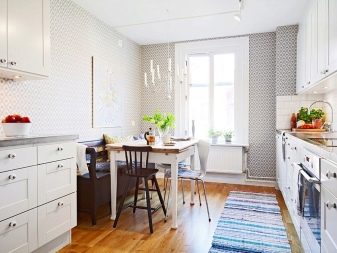
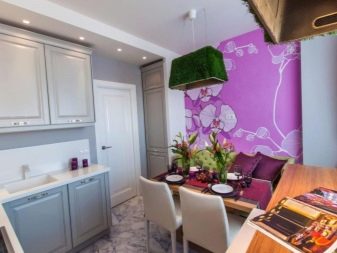
To make it easier, mark colors that definitely don't fit your interior. From the rest, consider both the full-color version and shades, pastel colors.
You also need to take into account the psychological side: each type of character has its own colors. If you want to demonstrate yourself in all its glory - use your colors, if you want to level out pronounced character traits - use the knowledge gained. For example, choleric people are often associated with the color red. A red kitchen can give you a boost of vivacity, vitality, or cause aggression, constant thoughts about problems.
You can also hide from the hot street on the sunny side with the help of color: cool colors will help with this. Moreover, some designers claim that warm shades visually narrow the space.

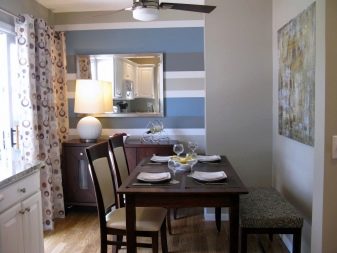
And don't forget to consider the color of the ceiling: small kitchens with low ceilings can save light-colored wallpapers both on the walls and on the ceiling.
And the last thing: the kitchen should be especially comfortable for the one who is there most often - the cook, then delicious meals are provided for the whole family.
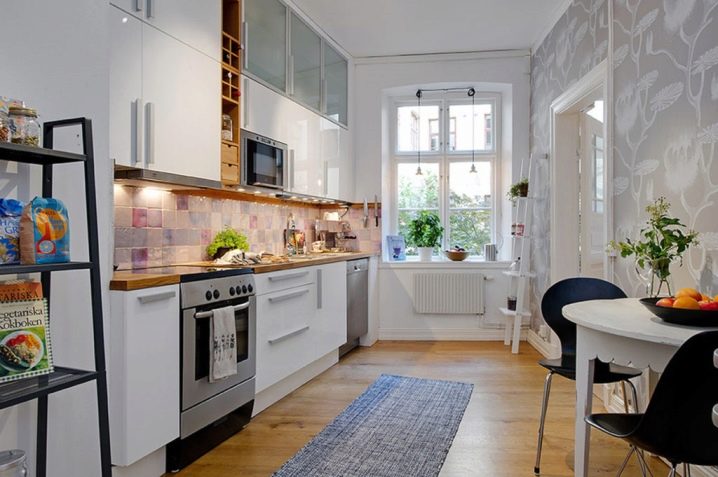
Ideas for a modern interior
If you want the kitchen to be unusual, but very cozy, use this idea using photo wallpaper. It would seem that there are many colors, but they are all combined with each other. In addition, delicate shades do not interrupt, but complement each other. Even in the dark, it will be warm and light here due to competent lighting. A transparent table will expand the space.
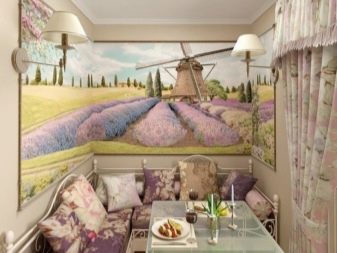
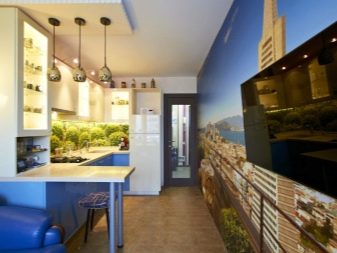
An amazing and, at first glance, strange combination of colors: brown, beige, shades of blue. But how nice to look at this cappuccino color! How cool the wallpaper, apron and blinds were. At the same time, due to the vertical strip, the kitchen became taller, and the reflective surfaces expanded it.
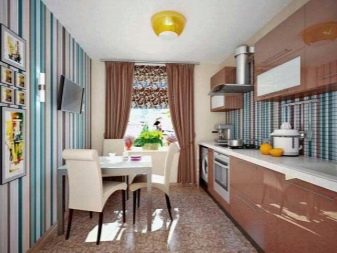
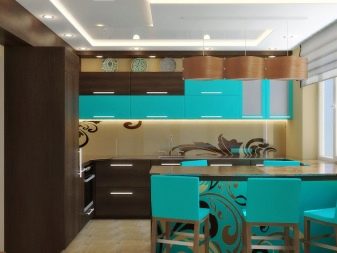
Geometric design makes space continuous. But the cage or rhombus should not be large, otherwise the kitchen will really turn into a cage. And here it is better to combine wallpaper with different patterns, for example, a cage below, and a monochrome canvas on top.
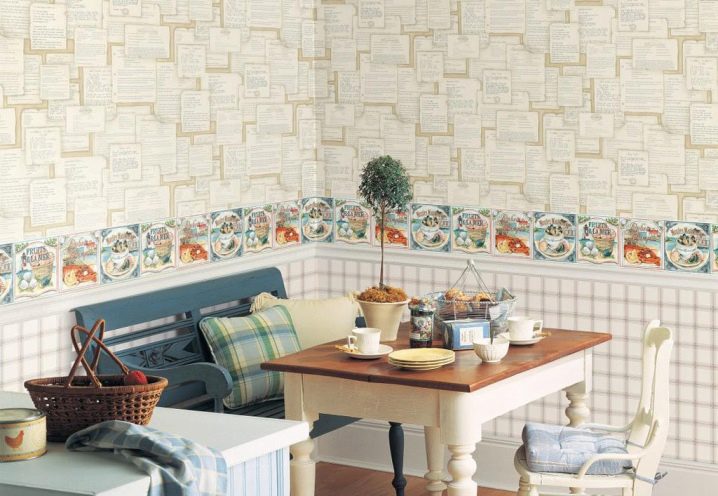
No one dares to call such a kitchen outdated. In kitchens, orange and its shades are often used. And such wallpaper with suitable furniture literally smooths the corners. Indeed, the small kitchen has become larger, brighter, more comfortable.
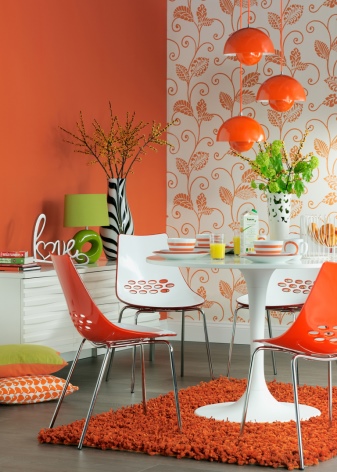
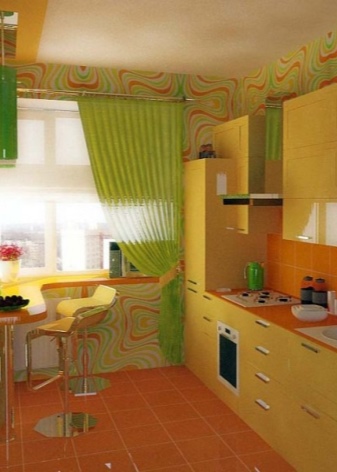
How to choose wallpaper for the kitchen, see the video below.













The comment was sent successfully.